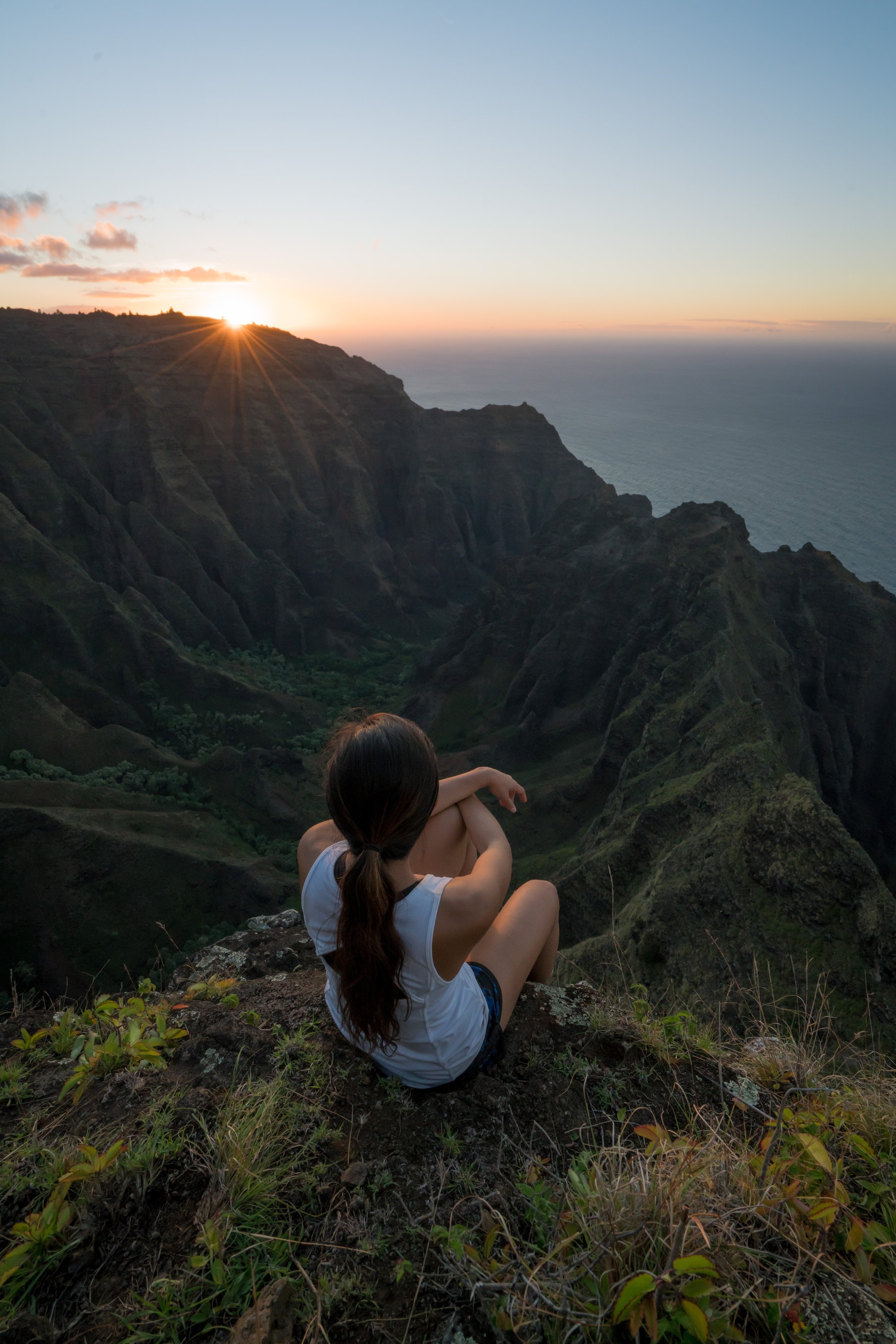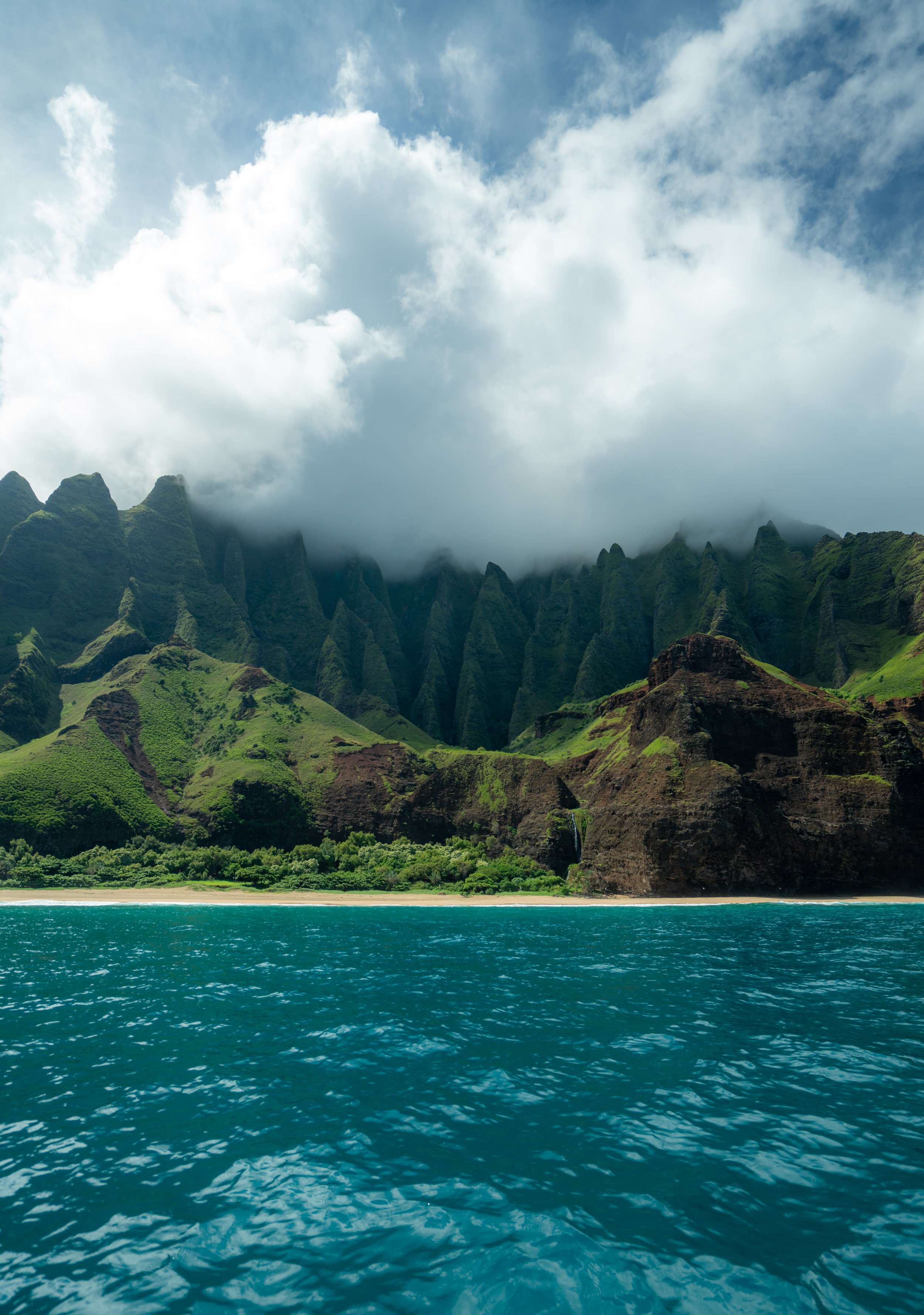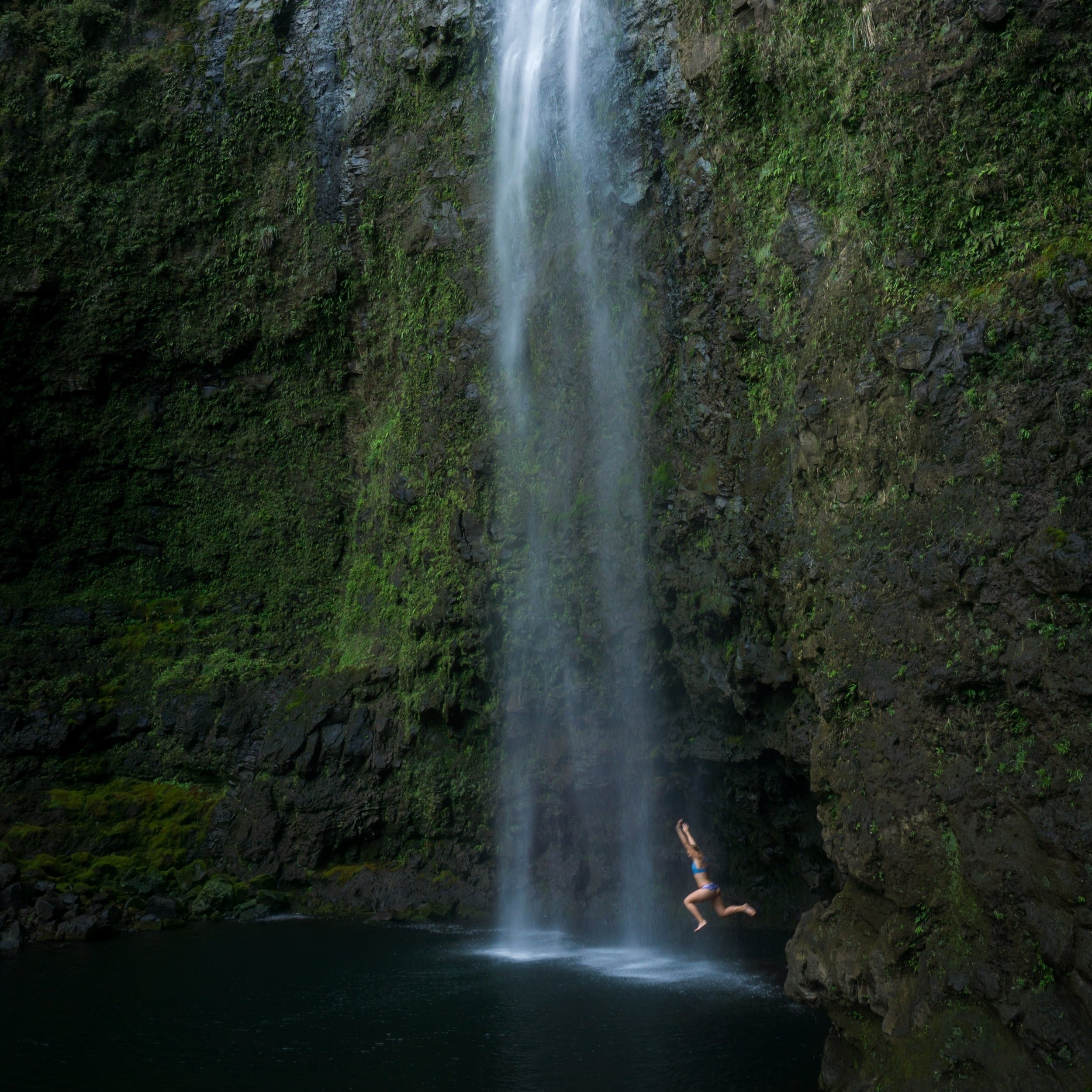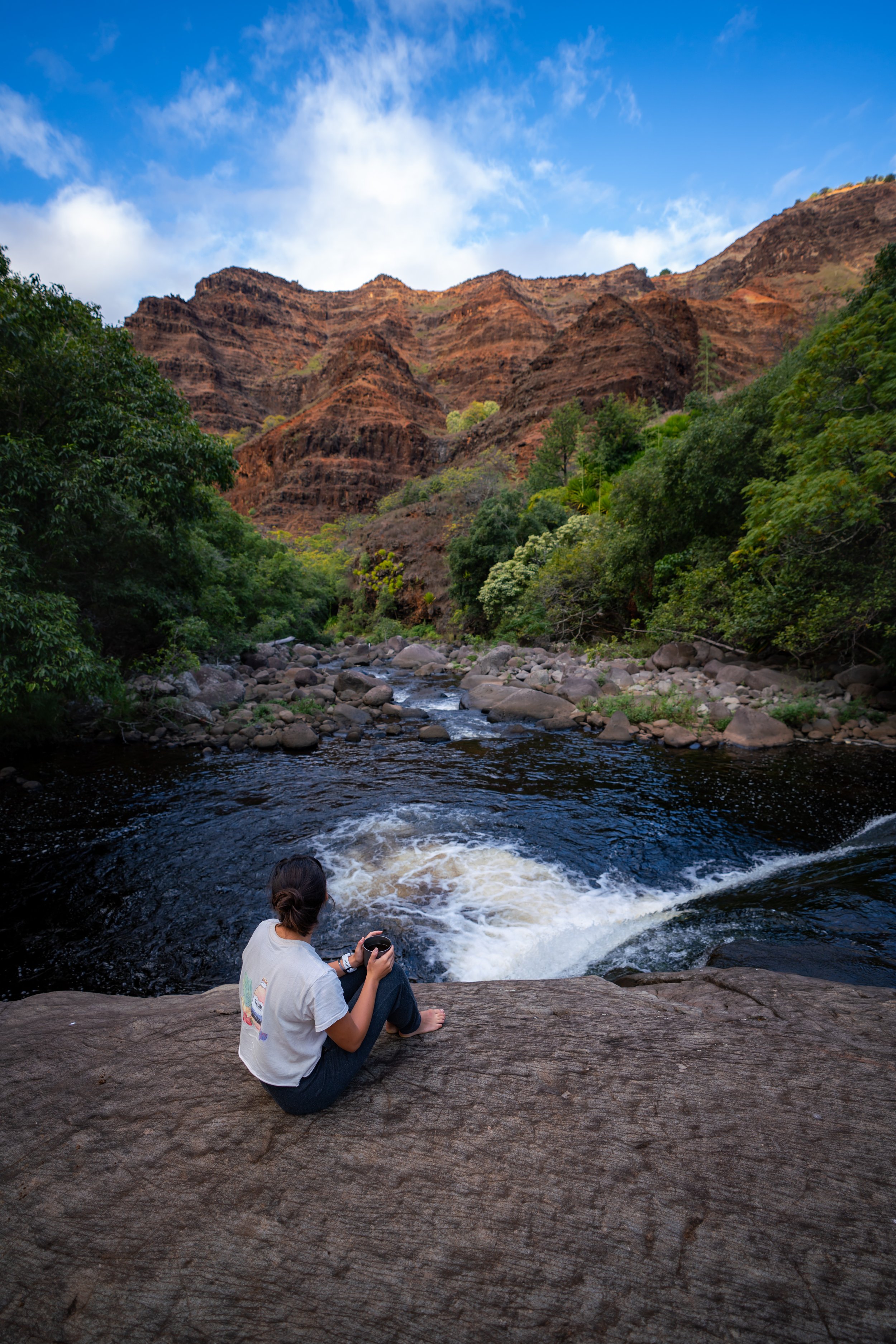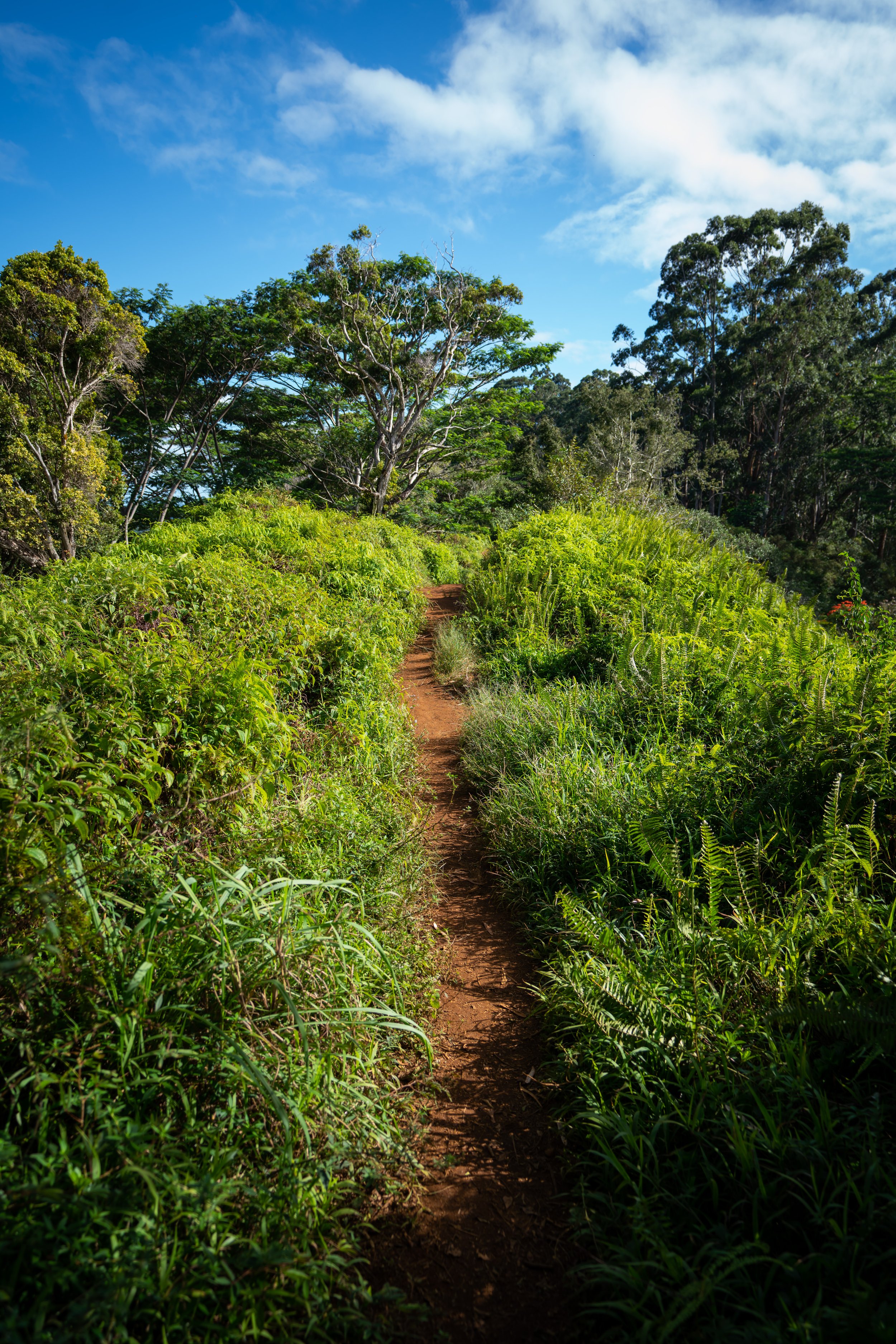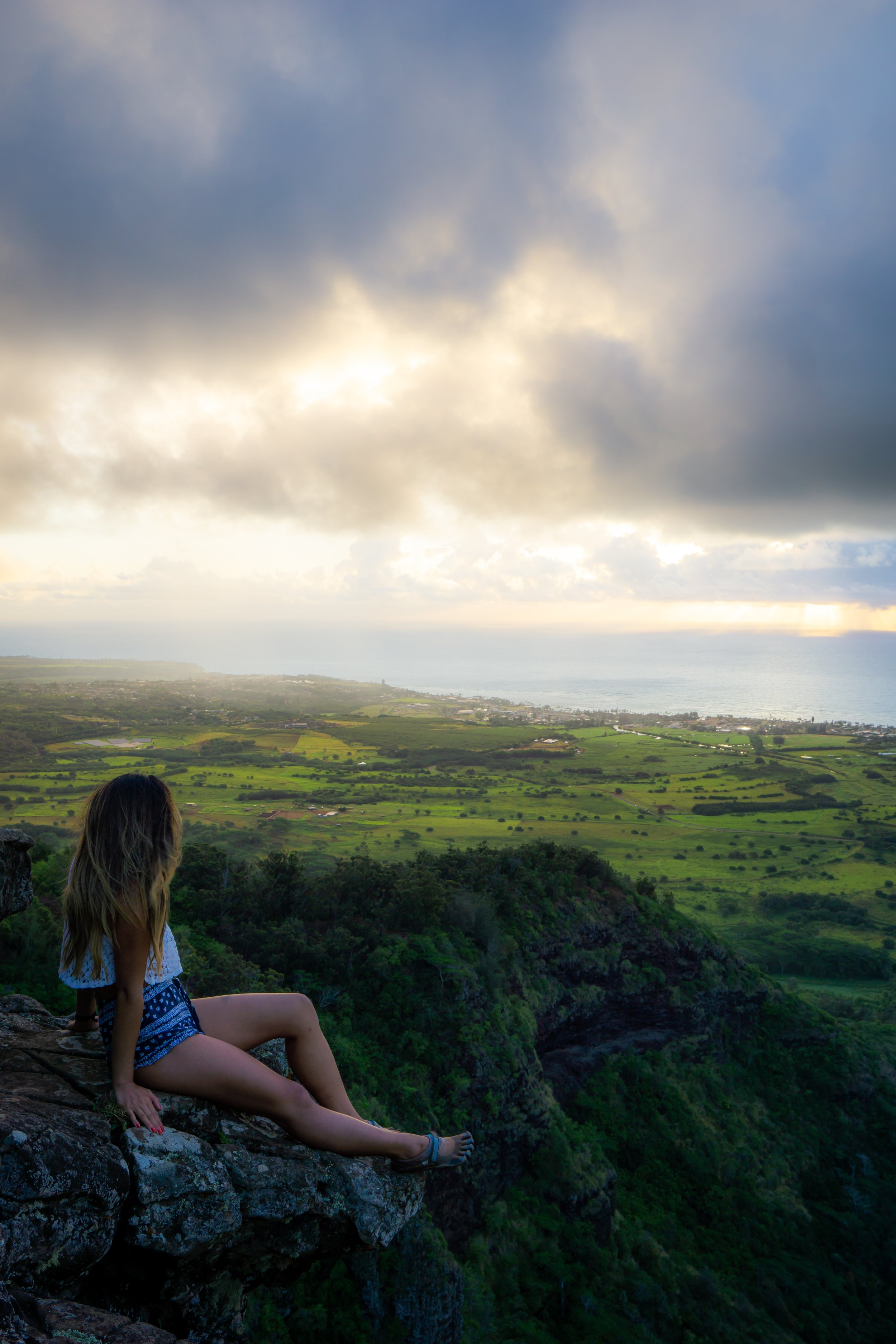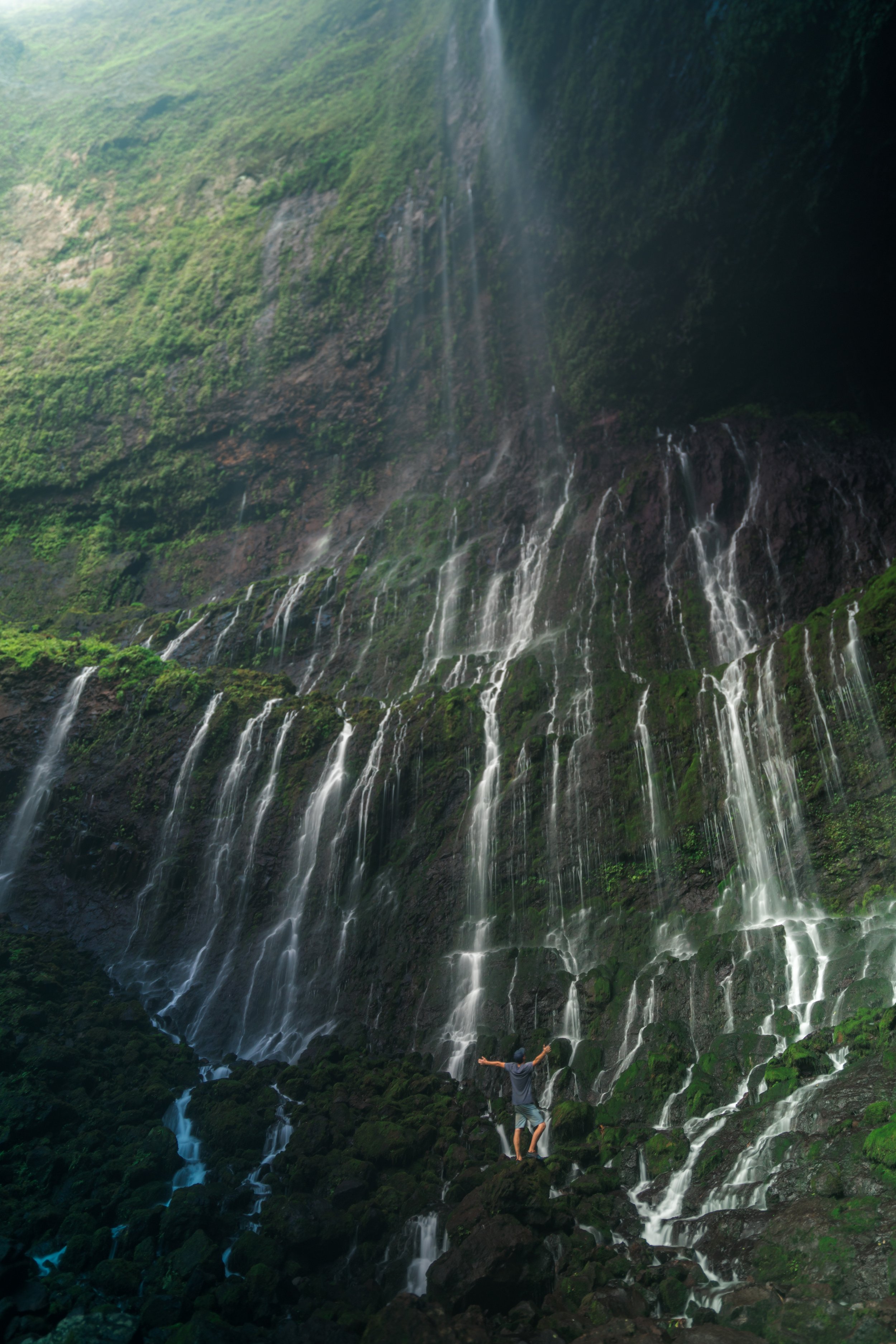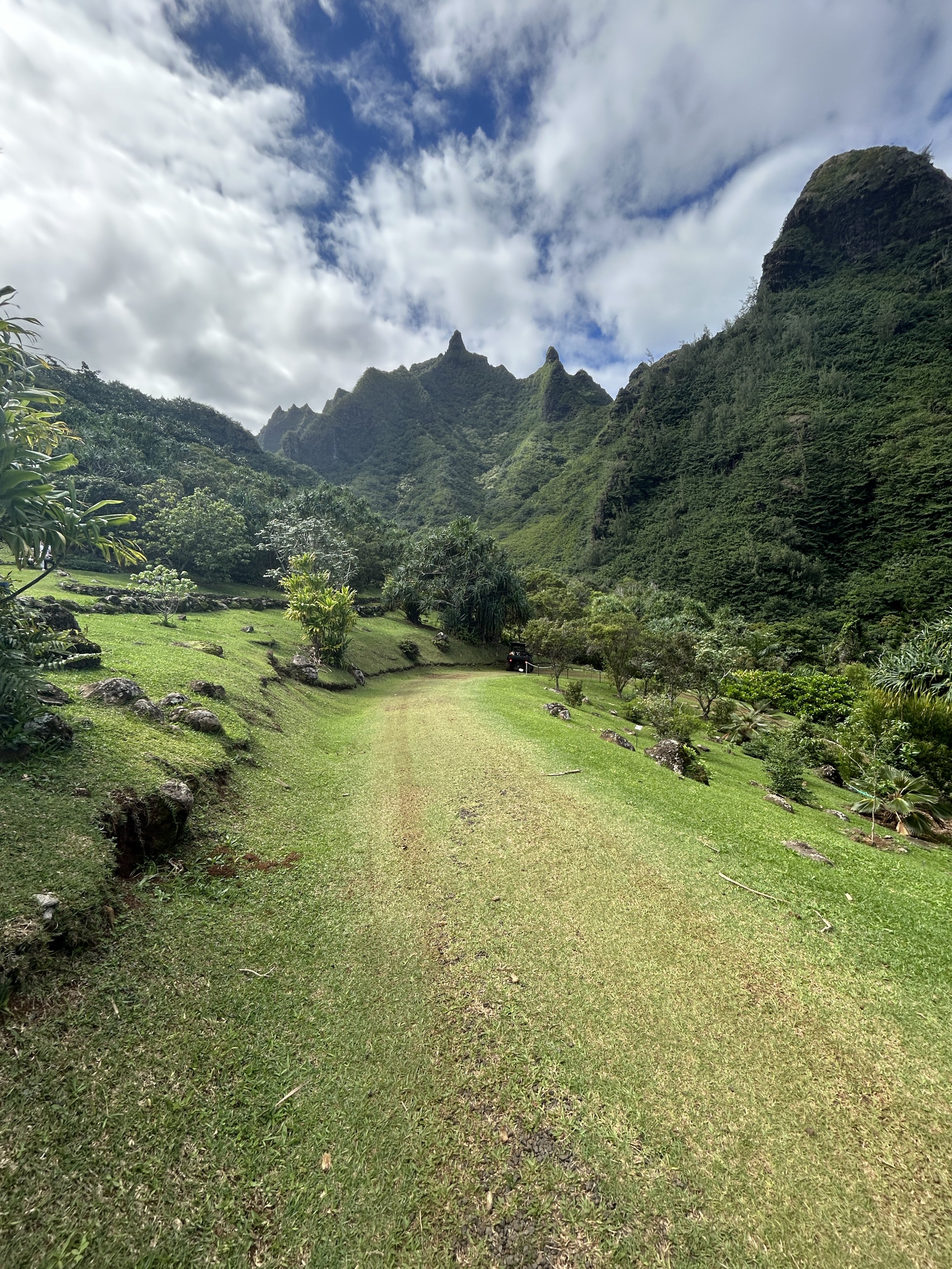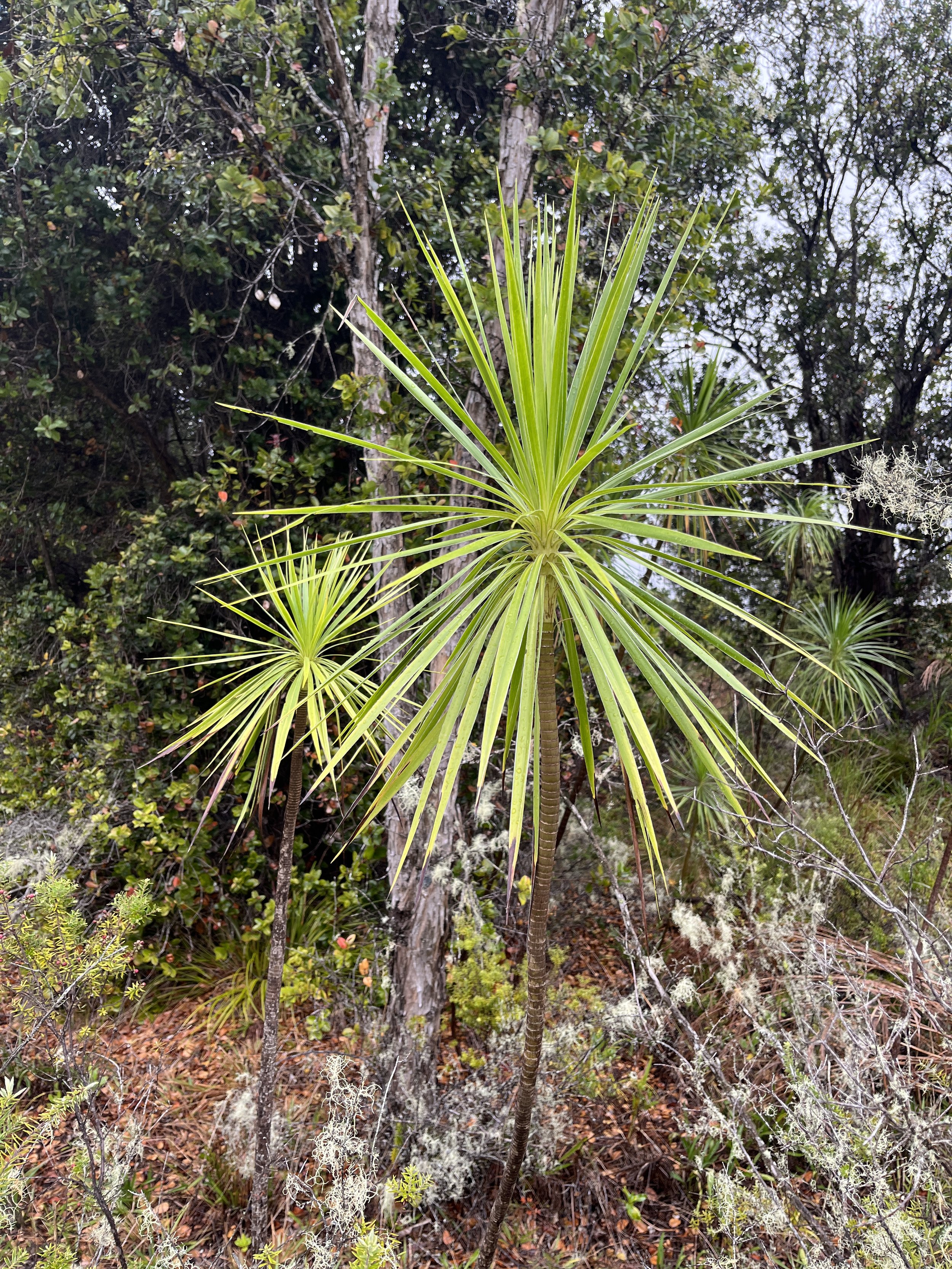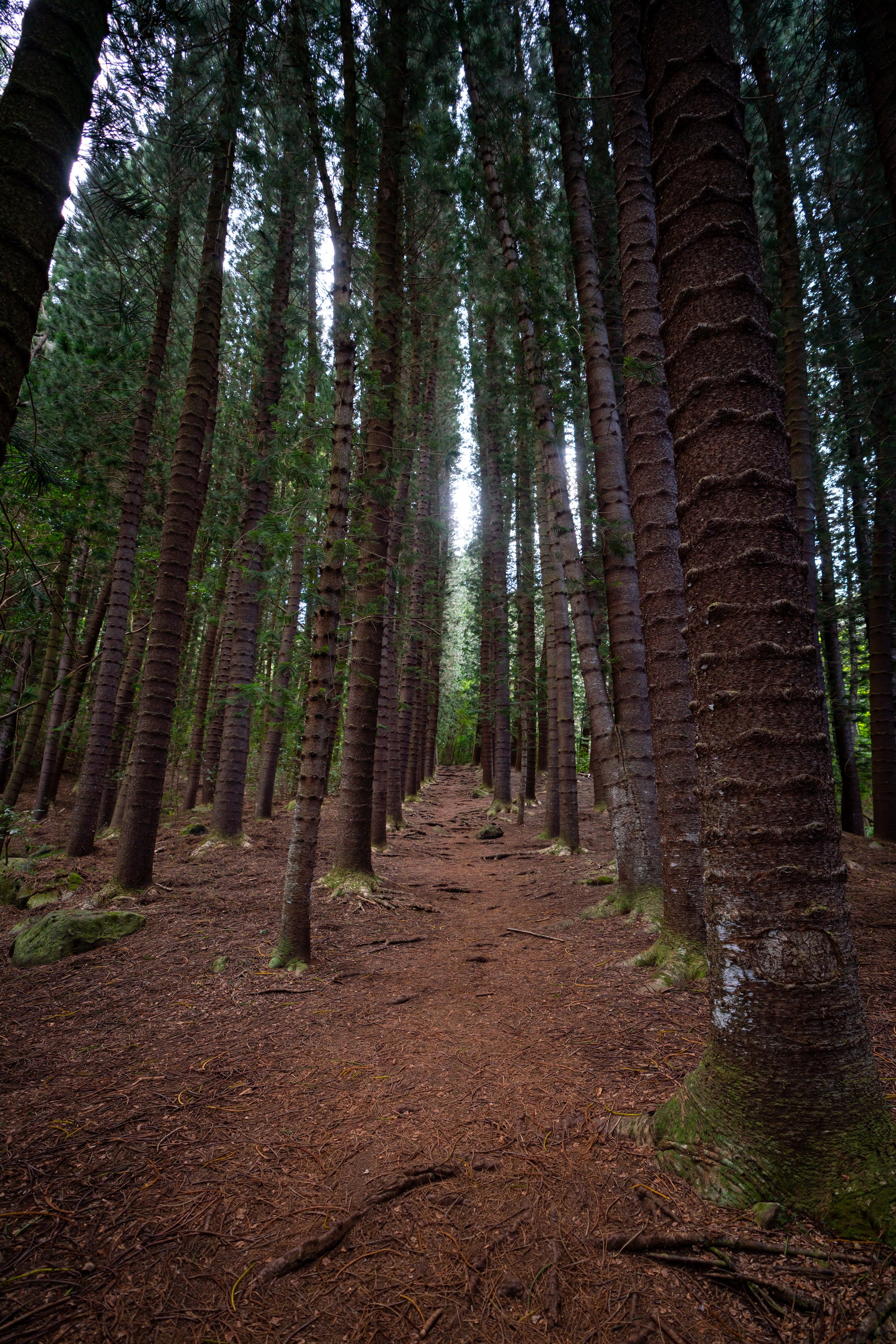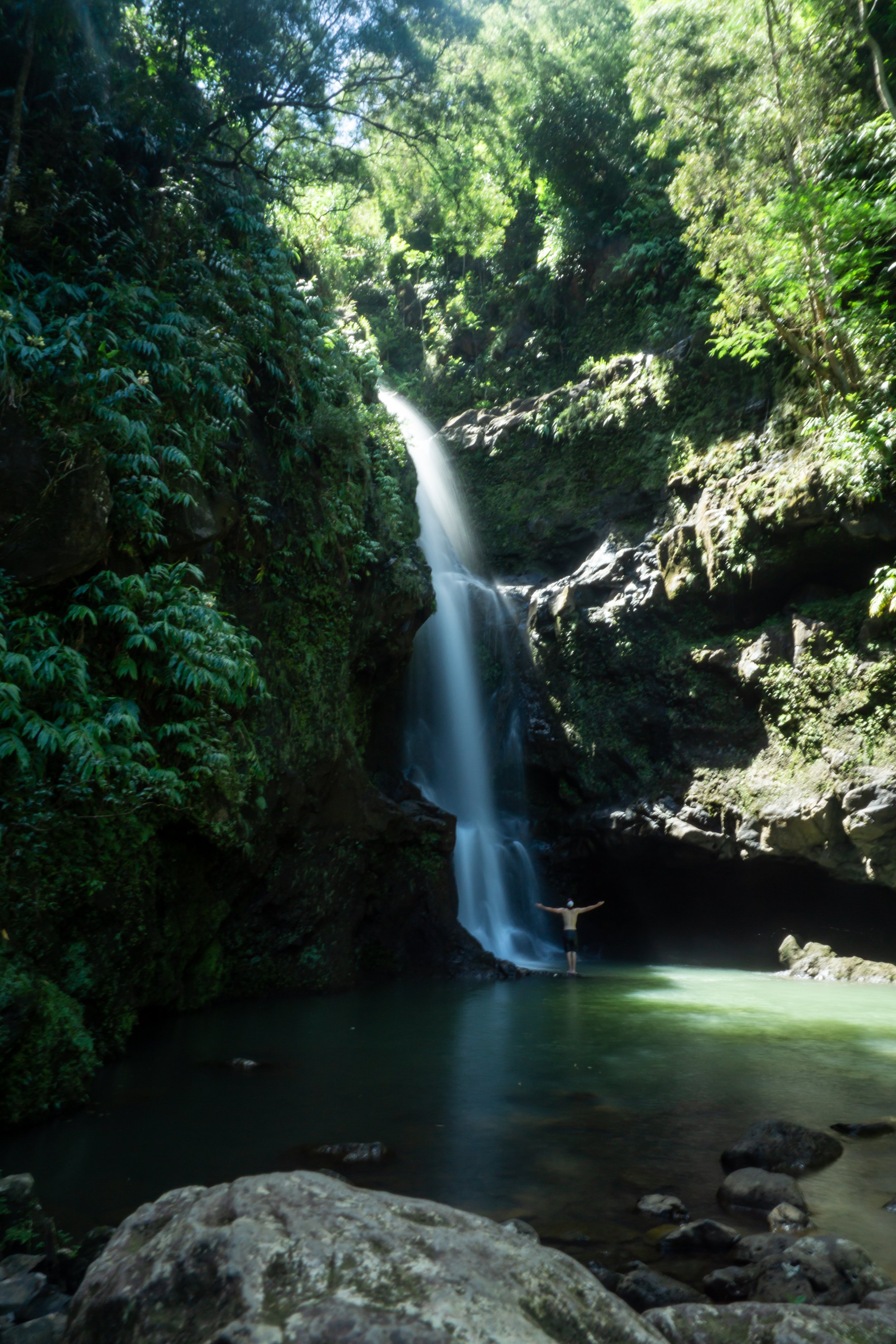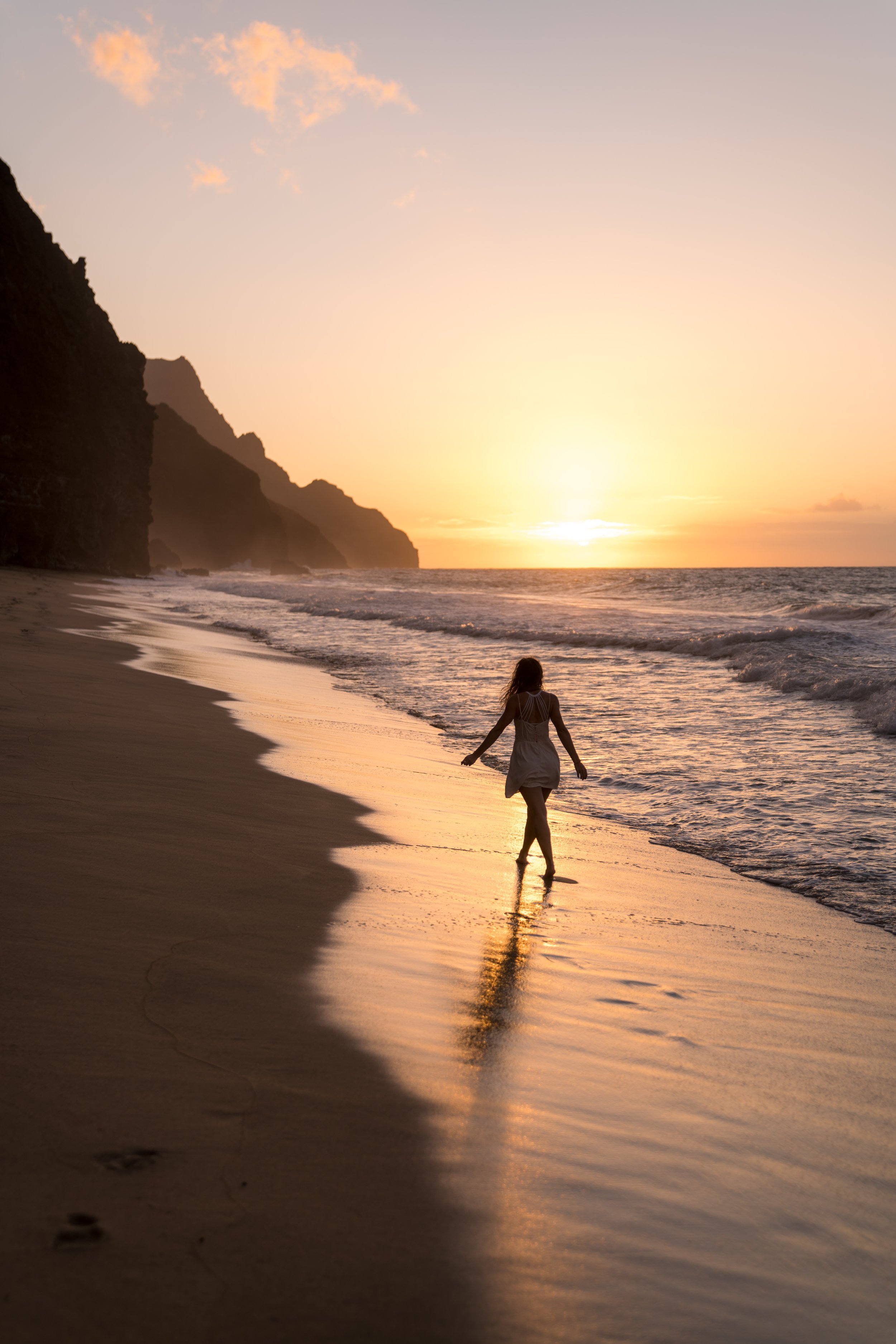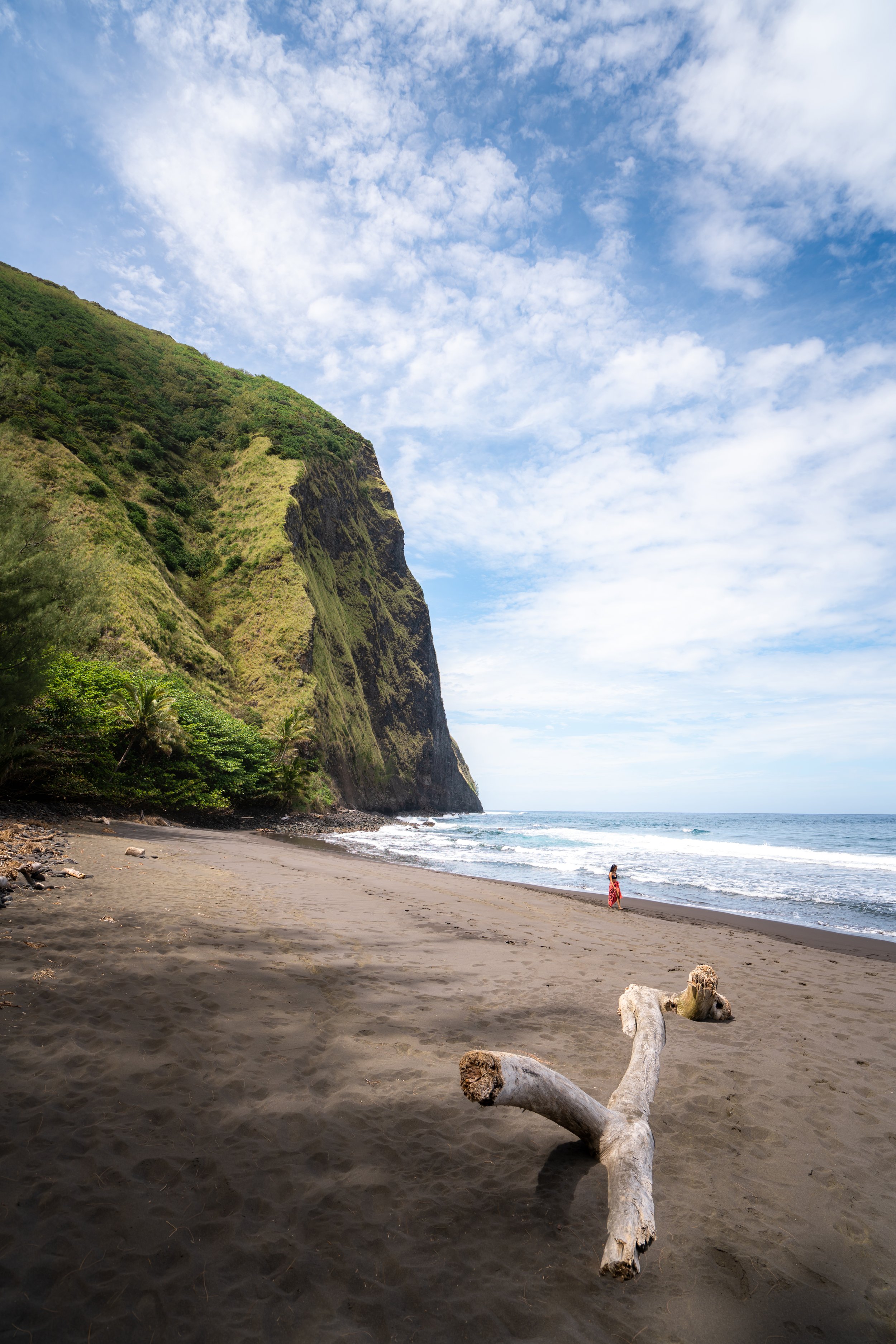Hiking the Kalalau Valley Trail (Big Pool) on Kauaʻi’s Nāpali Coast
Distance (One Way): 2.0 miles / 3.2 km
The Kalalau Valley Trail on the Nāpali Coast of Kauaʻi is often regarded as an adventure separate from that of the Kalalau Trail, in that the valley trail is most commonly hiked over the course of a couple of nights at Kalalau Beach.
By this, I mean that since the Kalalau Trail is such a long and tiring adventure, hiking the Kalalau Valley Trail most commonly makes sense when you have at least two nights planned at Kalalau Beach—not just the trail in general. I say it this way because some hikers choose to break up the long Kalalau Trail with a night in Hānakoa Valley each way.
Therefore, if you want to explore Kalalau Valley, I highly recommend planning at least two to three nights at Kalalau Beach, regardless of whether you plan to spend more nights spread across the entire trail.
My Hawaiʻi Hiking Checklist
Osprey 3L Water Bladder - The Osprey 3L water bladder is the most universal hiking and backpacking water bladder on the market, and it’s my go-to because of the slide-off seal that allows it to be quickly filled from the top. Additionally, individual parts are easily replaceable, such as the bite valve.
Blister / Heel Protectors - I swear by these cheap, amazing heel protectors to prevent blisters for nearly every kind of hiking and backpacking that I do!
Black Diamond Headlamp - Personally, I recommend the Black Diamond Storm because it is one of the brightest, lightest, and longest-lasting headlamps on the market—and trust me, the weight-to-battery-life ratio really does matter!
Hiking / Trail Running Shoes - Depending on the type of trail, I prefer to use either the Keen Targhee for longer, more rugged hiking or the HOKA Zinal Trail-Running Shoe for lighter, less intense trails. In either case, both have been amazing to me for many years across countless environments, and both can be found in men’s and women’s sizes. - (Men’s Keen / Women’s Keen) (Men’s HOKA / Women’s HOKA)
Waterproof Rain Shell - You never know when it may rain, and I’ve learned over the years that a rain shell is far better than a rain jacket. By this, I mean that it’s best to have something that the water will roll right off of, which is why I recommend the Patagonia Torrentshell 3L available in both men’s and women’s sizes.
High SPF Sunscreen - Packing high-SPF sunscreen is a must for long days outside!
Hiking the Kalalau Valley Trail
Unlike the Kalalau Trail, the Kalalau Valley Trail is, by and large, less trafficked.
It’s very clear that few hikers spending one or a few nights in Kalalau venture up the valley, which is why the Kalalau Valley Trail is more challenging than it may seem, at only 2.0 miles (3.2 km) each way.
For this reason, I strongly advise coming prepared with a downloaded map that highlights the trail because there will more than likely be a number of instances where you’ll question the correct route.
Almost immediately, the Kalalau Valley Trail begins climbing, as the whole trail gains about 900 ft. (274 m) of elevation over the course of 2.0 miles (3.2 km).
The Kalalau Valley Trail has a number of unmarked forks, just like the one in the photo below.
At this one specifically, stay straight (right) to remain on the correct trail.
There was more than a few Mango trees to be found in Kalalau Valley.
That being said, we climbed up to this viewpoint above the canopy, which the valley trail can be seen directly below.
As one can see from the photo below, the Kalalau Valley Trail will make you very familiar with Hau, a native bushy tree that’s sometimes referred to as Hau bush.
Kalahū Stream
The first stream crossing is where both of valley trails come together to make one trail that continues further up Kalalau Valley.
That being said, I don’t recommend taking the east trail into Kalalau Valley, as the trail is even less trafficked than the Nā Ala Hele Kalalau Valley Trail shown here.
It’s nice to see that Kalalau Valley is covered in native Alaheʻe trees, as well as a handful of beautiful Wiliwili trees.
This second small stream crossing is a good indicator that you’re on the correct trail.
Kalalau Stream
The third stream crossing on the Kalalau Valley Trail is the Kalalau Stream, which the trail should parallel for the remainder of the hike.
This turn in the Kalalau Valley Trail was one of the most tricky to figure out, which is exactly why I recommend following a GPS application of some sort.
That being said, go right to continue through the Hau trees on the Kalalau Valley Trail.
Just prior to the Big Pool, the Kalalau Valley Trail crosses over this unnamed stream on the right-hand side.
After the above crossing, the Kalalau Valley Trail will end shortly after.
Big Pool
The end of the Kalalau Valley Trail is the Big Pool, located almost exactly 2.0 miles (3.2 km) away from the original Kalalau Trail junction.
That being said, Big Pool is not the end of the trail according to certain apps, like AllTrails, but after exploring extensively further up the valley, I recommend turning back here.
There are no more waterfalls to find unless Kalalau has seen a significant amount of rain, which would not be good a time to hike the valley trail, given the number of stream crossings that could become dangerous.
All in all, Big Pool is a great place to jump in and swim, but be sure to check the depth before jumping, as not all parts of the pool are as deep as others.
Native Plants on the Kalalau Valley Trail
Compared to the pristine native forest located high in the upper elevations of Kalalau Valley, the lower parts of the valley are predominantly non-native/ invasive species.
Non-natives like Java plum, Mango, and the Downy Wood Fern dominate the lower valley, but there are a number of native plants that can be found on the Kalalau Valley Trail, such as ʻAʻaliʻi, Alaheʻe, Hau, Wiliwili, Kāwelu, and ʻĀkia, to truly only name a few.
If you would like to know more about these and tons of other native Hawaiian plants from across the islands, I encourage you to check out my separate post linked below.
Read My Separate Post: Native Hawaiian Plant Guide
More Kauaʻi Adventures
If you’re interested in reading about some more amazing Kauaʻi adventures, check out my separate posts below!
Best Hotels & Vacation Rentals on Kauaʻi
Since the best things to do on Kauaʻi are located on all different sides of the island, I recommend starting your search on VRBO.
You may want to stay some nights in Poʻipū, some nights in Kapaʻa, and even some nights on the beautiful North Shore, but this way you can plan out places to stay and adventures on all different sides of the island!
Best Way to Book Rental Cars!
I travel quite a bit, and I know firsthand that finding a good rental car deal can be a challenge, but that’s why I recommend comparing all of your options with Discover Cars.
In short, Discover Cars is a well-known, reputable business that allows you to search for the best deal across companies, and they have the best full-refund cancellation policy I’ve ever seen, valid up to 72, or sometimes even 48, hours prior to your reservation!
Book Here: Discover Cars
Visiting Other Islands
If you are visiting Kauaʻi or heading to another island, check out some of my personal recommendations for Oʻahu, Maui, Kauaʻi, Molokai, Lānaʻi, and Hawaiʻi Island (Big Island) in these separate posts.
If you’re trying to decide which island is right for your visit, check out my overview about each island in the post below.
Read My Separate Post: What is the Best Hawaiian Island to Visit?
What is the Best Time of Year to Visit Hawaiʻi?
The weather in Hawaiʻi can often appear to be warm and beautiful throughout the year, but in my experience, there is a lot more to consider when planning what time of year to visit the islands, such as what island you are considering, what sides of each island do you plan to stay, what activities are you most interested in, the wildlife, and countless other nuanced variables that can all impact the type of trip you can expect to have.
For these reasons, I highly recommend reading through my separate article to not only understand my thoughts regarding the best time of year to come to Hawaiʻi but also what you need to consider based on the time of year that you plan to visit.
Read My Separate Post: What is the Best Time of Year to Visit Hawaiʻi?
Safety
All hikes in Hawaiʻi should not be compared to trails outside of the islands, and hikers should exercise due caution on every adventure, given that many are extremely dangerous.
By this, I mean that Hawaiʻi is known for hot, humid weather, steep, dramatic, and unstable cliffs, and flash floods, which can occur without warning. Therefore, it is important that you check the local forecast, understand the physical condition of your entire group, and pack sufficient food and water before attempting any adventure.
Disclaimer
All information provided on this blog is for informational purposes only and is not intended to be a substitute for information or advice from qualified professionals or managing agencies.
Noah Lang Photography LLC makes no representations or warranties regarding the accuracy or completeness of the information provided here, and readers should use their own discretion, judgement, and seek professional advice where it is appropriate.
Furthermore, Noah Lang Photography LLC shall not be held responsible for any injuries, lost individuals, or legal issues arising from the use of information provided on this website, and if applicable, the above safety disclaimer should be referenced to provide a generic overview of the risks involved.
All said, the content on this blog is for the sole use of Noah Lang Photography LLC, and unauthorized use or reproduction of this content is strictly prohibited.
Disclosure
This post is not sponsored.
However, some of the links in this post are affiliate links, which means that I may earn a small commission if a purchase is made through one of those links. This commission comes at no additional cost to you, and I only recommend products that I personally use and believe will add value to my readers. Thank you for your support, which enables me to continue creating more!
To read the full privacy policy, click here.

About This Blog
Noah Lang Photography, also known as @noahawaii, is 100% reader-supported!
I do not accept guest articles or sponsored content of any kind on my blog, which is why, if you enjoy the outdoor and travel content I create, please consider buying me a coffee!
I appreciate your support, which helps me continue to keep this blog alive!










